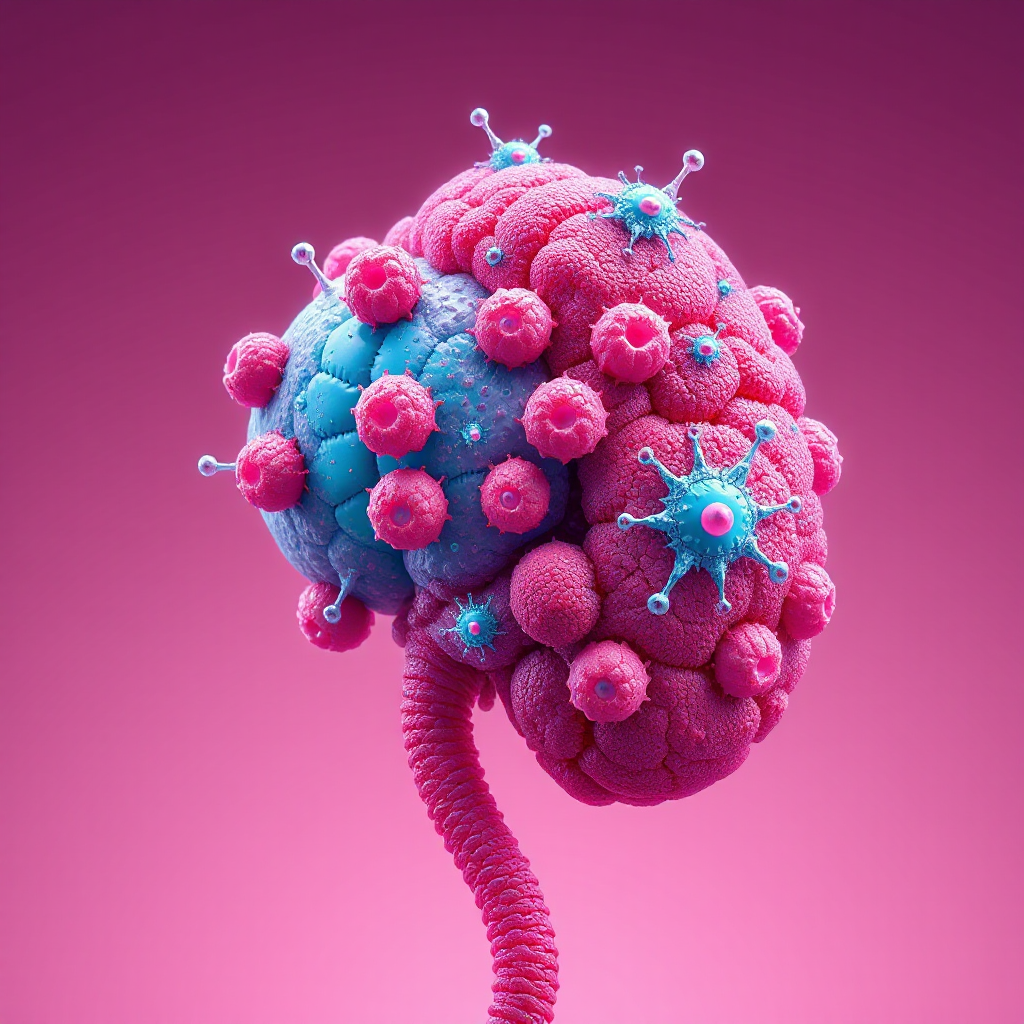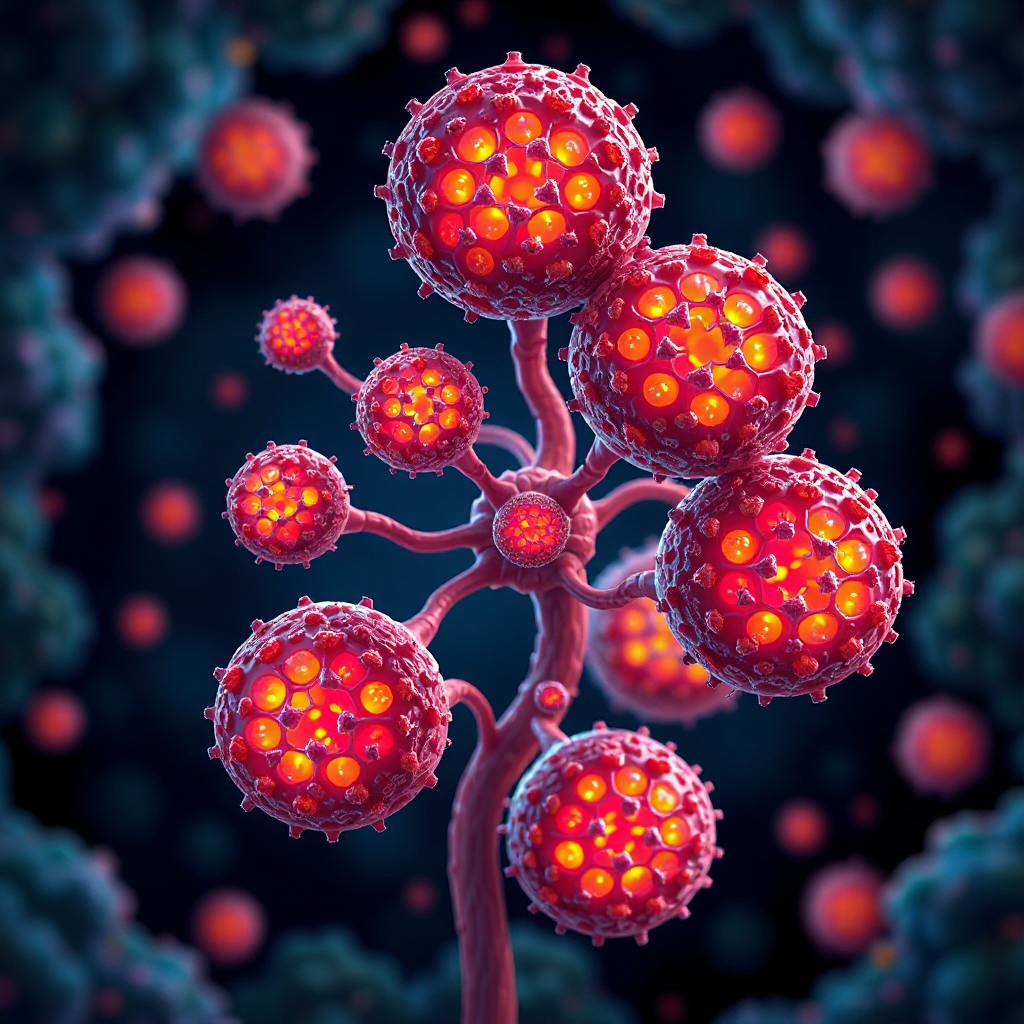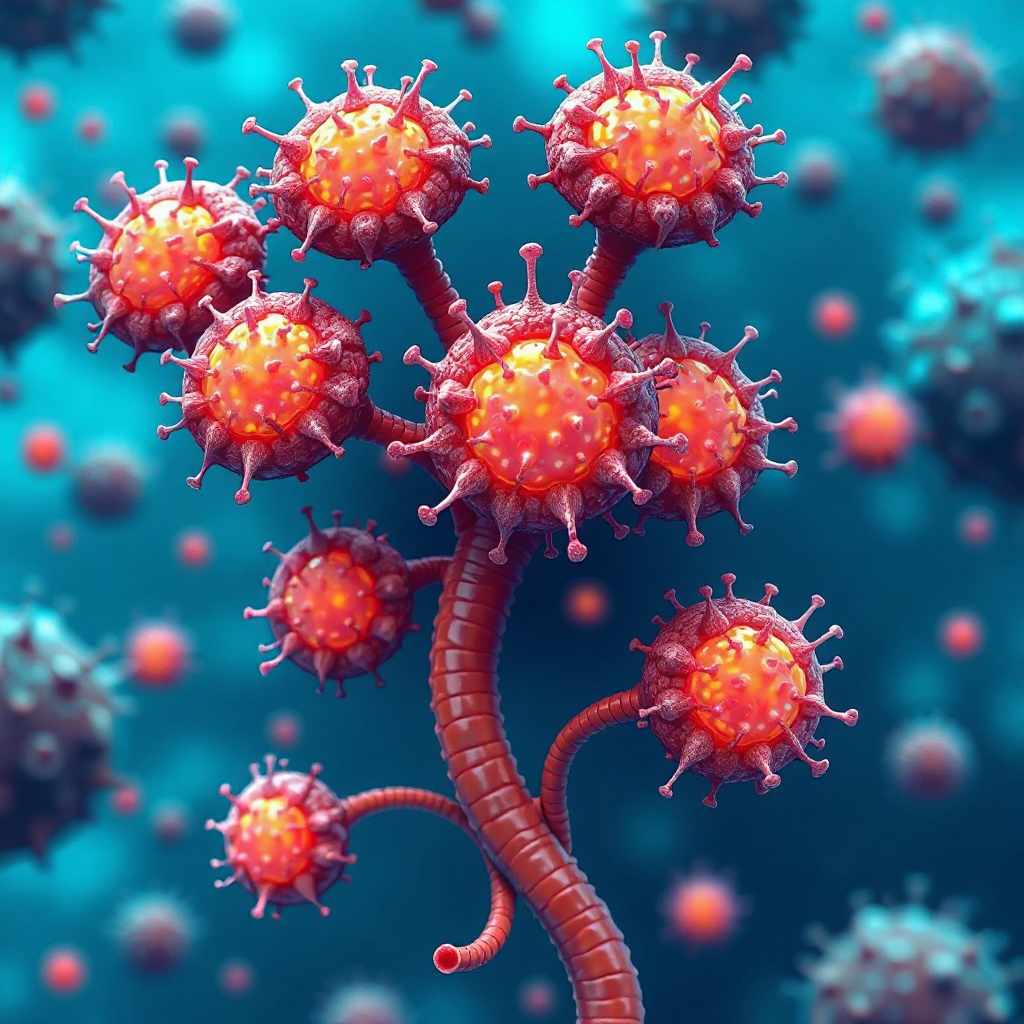What is Wilms Tumor Nephroblastoma and How Does it Affect Children

Wilms tumor nephroblastoma is a rare type of kidney cancer that affects young children, with most cases diagnosed before the age of 5. Nearly 75% of these tumors occur in this age group, and the average age of diagnosis ranges from 2 to 3 years old. This condition develops when abnormal cells grow uncontrollably in one or both kidneys. Early detection plays a crucial role in treatment success, as survival rates for early-stage tumors can reach 95% to 100%. Understanding this disease helps you recognize symptoms and seek timely medical care for your child.
Key Takeaways
Wilms tumor nephroblastoma is a rare kidney cancer. It mostly affects kids under 5 years old. Finding it early helps with treatment success.
Common signs are a big belly, blood in pee, and a lasting fever. If you see these, get medical help fast.
Genes are important in causing Wilms tumor. If your family has a history, think about genetic counseling for your child.
Treatment usually means surgery to take out the tumor. This is followed by chemo or radiation. Helping with side effects keeps your child more comfortable.
After treatment, regular check-ups are needed. These help watch for problems or the tumor coming back.
What is Wilms Tumor Nephroblastoma?
Definition and Overview
Wilms tumor nephroblastoma is the most common solid renal mass and abdominal malignancy in children. This cancer originates in the kidney cells and can occur in both hereditary and sporadic forms. In about 6% of cases, it affects both kidneys. The tumor develops when kidney cells grow uncontrollably, forming a malignant mass. While rare, it remains the most frequent type of kidney cancer in childhood. Early diagnosis and treatment significantly improve outcomes, making awareness crucial for parents and caregivers.
Why It Primarily Affects Children
This condition primarily affects children because it often arises from immature kidney tissue that fails to develop properly. These remnants, known as nephrogenic rests, can lead to tumor formation. Genetic factors also play a significant role. Variants in genes like WT1, CTNNB1, and AMER1 disrupt normal cell growth and division, increasing the risk of Wilms tumor nephroblastoma. The average age of diagnosis is between 3 and 4 years, and cases in older children or adults are extremely rare. Additionally, certain genetic syndromes, such as WAGR Syndrome and Beckwith-Wiedemann Syndrome, heighten the likelihood of developing this cancer.
How Common is Wilms Tumor?
Wilms tumor nephroblastoma affects approximately 1 in 10,000 children in Europe and North America. It is slightly more common in girls than boys. The incidence rate varies globally, with higher rates in high-income regions. For example, the median incidence in high-income countries is 15.1 cases per million children, compared to 8.6 in middle-income and 9.8 in low-income regions. Despite its rarity, it remains a significant concern due to its impact on young children.
Region | Median Incidence (ASR/million) |
|---|---|
High-income | 15.1 |
Middle-income | 8.6 |
Low-income | 9.8 |
Symptoms of Wilms Tumor

Common Symptoms
Recognizing the symptoms of Wilms tumor early can make a significant difference in your child’s treatment and recovery. This condition often presents with noticeable signs that you can observe. Some of the most common symptoms include:
Blood in the urine
High blood pressure
Other symptoms may include nausea, constipation, or a loss of appetite. You might also notice your child feeling unusually tired or weak. These symptoms can vary depending on the tumor's size and whether it has spread to other parts of the body.
If you observe any of these signs, it’s important to monitor your child closely. While these symptoms may not always indicate Wilms tumor nephroblastoma, they should not be ignored.
When to Seek Medical Attention
Certain symptoms require immediate medical attention to ensure your child receives timely care. You should contact a healthcare provider if you notice:
A large lump or swelling in your child’s abdomen
Persistent fever
Blood in the urine
Shortness of breath or difficulty breathing
Severe nausea or vomiting
Constipation that does not improve
High blood pressure, though less obvious, can also signal a problem. If your child has been diagnosed with a genetic syndrome associated with Wilms tumor, such as Beckwith-Wiedemann Syndrome, you should remain especially vigilant. Early medical intervention can improve outcomes and provide peace of mind.
Tip: Trust your instincts as a parent. If something feels off about your child’s health, don’t hesitate to seek professional advice.
Causes and Risk Factors
Genetic Mutations
Genetic mutations play a significant role in the development of Wilms tumor nephroblastoma. These mutations disrupt normal cell growth and division, leading to the formation of tumors. Several key genes are commonly associated with this condition:
Gene | |
|---|---|
WT1 | Regulates gene activity and promotes cell proliferation |
CTNNB1 | Involved in cell growth and division |
AMER1 | Regulates cell proliferation |
IGF2 | Promotes cell growth when overactive |
H19 | Normally restrains cell growth; loss leads to tumor growth |
Mutations in these genes can occur sporadically or be inherited. If you have a family history of Wilms tumor, genetic counseling may help assess your child’s risk.
Associated Syndromes
Certain genetic syndromes significantly increase the likelihood of developing Wilms tumor. These syndromes often involve mutations in genes that regulate kidney and cell development. Some of the most common syndromes include:
Denys-Drash syndrome: Linked to WT1 gene mutations, associated with kidney disease and a high risk of Wilms tumors.
Frasier syndrome: Also caused by WT1 mutations, involves kidney disease and reproductive organ cancers.
Beckwith-Wiedemann syndrome: Results from defects in chromosome 11 affecting the WT2 gene, with about a 5% risk of Wilms tumors.
Other syndromes: Includes Perlman syndrome, Sotos syndrome, Simpson-Golabi-Behmel syndrome, Bloom syndrome, Li-Fraumeni syndrome, and Trisomy 18.
If your child has been diagnosed with one of these syndromes, regular medical check-ups can help detect potential issues early.
Other Risk Factors
Unlike many adult cancers, Wilms tumor nephroblastoma is not linked to lifestyle or environmental factors. There is no evidence that diet, physical activity, or tobacco exposure plays a role in its development. This means there is nothing you or your child could have done to prevent it. However, some studies suggest that exposure to certain chemicals or toxins during pregnancy might slightly increase the risk. More research is needed to confirm this connection.
Genetic predispositions remain the primary risk factor. If your child has a known genetic mutation or syndrome, staying vigilant and working closely with healthcare providers can make a difference in early detection and treatment.
Diagnosing Wilms Tumor
Medical History and Physical Examination
Diagnosing Wilms tumor begins with a detailed medical history and physical examination. Your doctor will ask about symptoms such as abdominal swelling, pain, fever, or blood in the urine. They will also check for high blood pressure, which is common in children with this condition. During the physical exam, the doctor may feel for a lump or swelling in your child’s abdomen. This step helps identify potential abnormalities and guides the next steps in the diagnostic process.
Imaging Tests
Imaging tests play a crucial role in confirming the presence of Wilms tumor nephroblastoma. Doctors often start with an ultrasound because it is noninvasive and does not expose your child to radiation. This test provides a clear picture of the kidneys and can detect any masses. Doppler ultrasound may also be used to check for blood clots in nearby veins.
If further evaluation is needed, a CT scan or MRI may be performed. CT scans help determine the tumor's size and whether it has spread to other areas. MRI offers detailed images, especially useful for assessing blood vessel involvement. These imaging techniques ensure a comprehensive understanding of the tumor's characteristics and stage.
Biopsy and Laboratory Analysis
In most cases, doctors do not perform a biopsy before surgery. Instead, they remove the tumor surgically and send it to a pathologist for examination. This approach minimizes the risk of complications and ensures an accurate diagnosis. However, in rare cases where surgery is not immediately possible, a biopsy may be necessary.
Evidence | Description |
|---|---|
Biopsy Recommendation | Transcutaneous biopsy is not usually recommended for Wilms tumor due to the risk of complicating treatment. |
Surgical Approach | The tumor is often surgically removed, and a pathologist confirms the diagnosis post-surgery. |
Laboratory tests, including blood tests and urinalysis, may also be conducted to assess kidney function and detect abnormalities. These tests provide additional information to support the diagnosis and guide treatment planning.
Treatment Options for Wilms Tumor

Surgery (Nephrectomy)
Surgery is often the first step in treating Wilms tumor. Doctors typically perform a radical nephrectomy, which removes the entire kidney along with surrounding tissues. This approach works well when the tumor is confined to one kidney. In cases where tumors affect both kidneys, a partial nephrectomy may be performed to preserve as much kidney function as possible. These surgical procedures aim to remove the tumor completely while minimizing the risk of recurrence. Your child’s medical team will carefully evaluate the tumor’s size and location to determine the best surgical plan.
Chemotherapy and Radiation Therapy
Chemotherapy and radiation therapy are essential components of treatment for Wilms tumor nephroblastoma. Chemotherapy uses powerful drugs to shrink tumors before surgery or eliminate remaining cancer cells afterward. Radiation therapy, on the other hand, uses high-energy beams to target and destroy cancer cells. These treatments are tailored based on the tumor’s stage and histology.
Stage and Histology | Surgery | Chemotherapy | Radiation Therapy |
|---|---|---|---|
Stage I or II favorable histology without loss of heterozygosity | Nephrectomy | Vincristine, dactinomycin | No |
Stage III and IV favorable histology with loss of heterozygosity | Nephrectomy | Vincristine, dactinomycin, doxorubicin, cyclophosphamide, etoposide | Yes |
Your child’s oncologist will explain the treatment plan in detail, ensuring you understand the goals and potential outcomes.
Managing Side Effects
Treatments for Wilms tumor can cause side effects, but many of these can be managed effectively. Common side effects include fatigue, nausea, hair loss, and mouth sores. Some children may experience changes in appetite, constipation, or diarrhea. The medical team can provide medications to reduce nausea and vomiting. Maintaining a balanced diet and staying hydrated can also help your child feel better during treatment.
Tip: Keep an open line of communication with your child’s healthcare team. They can offer strategies to manage side effects and improve your child’s quality of life.
Prognosis and Recovery
Survival Rates and Long-term Outlook
The prognosis for children with Wilms tumor nephroblastoma is highly favorable, especially when diagnosed early. Survival rates vary depending on the tumor's stage and histology. Children with favorable histology have the best outcomes, with survival rates often exceeding 90%. The table below highlights survival rates based on tumor stage and type:
Tumor Stage | Favorable Histology | Focal Anaplastic | Diffuse Anaplastic |
|---|---|---|---|
I | 95% - 100% | 95% - 100%* | 95% - 100%* |
II | 95% - 100% | 80% - 85%* | 80% - 85%* |
III | 90% - 100% | 90% - 100%* | 60% - 80%* |
IV | 90% - 100% | 70% - 75%* | 30% - 70%* |
V | 95% - 100% | 95% - 100% | 65% - 70% |
Children who complete treatment often lead healthy lives, but long-term monitoring is essential. Some may face risks like heart or lung issues, scoliosis, or fertility concerns due to treatment side effects. Regular follow-ups help address these challenges early.
Emotional and Psychological Support for Families
Caring for a child with Wilms tumor can be emotionally taxing. Families often need support to navigate the psychological and social challenges that arise during and after treatment. You can access resources such as:
Psychosocial support teams that address emotional and social needs.
Child life services to help your family cope with the treatment process.
Recreational programs like art and music therapy, which provide creative outlets for children.
Sibling support groups to ensure the entire family feels included and supported.
These services can help reduce stress and foster resilience during recovery. Remember, seeking support is not a sign of weakness but a step toward healing.
Post-Treatment Monitoring and Care
After treatment, follow-up care plays a critical role in ensuring your child’s health. Doctors recommend regular physical exams and imaging tests to monitor for tumor recurrence or treatment-related complications. A typical follow-up schedule includes:
Physical exams and imaging tests (e.g., chest x-rays, ultrasounds, CT scans).
Blood and urine tests to assess kidney function.
Frequent doctor visits every 6 to 12 weeks initially, with less frequent visits over time.
Immediate reporting of any new symptoms to the care team.
Your child’s medical team may also create a survivorship care plan. This plan summarizes the diagnosis, treatment, and follow-up schedule while addressing potential late effects. Staying proactive with follow-up care ensures the best possible outcomes for your child.
Wilms tumor nephroblastoma is a serious condition, but early detection can make a significant difference in your child’s recovery. Catching cancer early often allows for more treatment options and improves outcomes. You should watch for symptoms like abdominal swelling, pain, fever, blood in the urine, or high blood pressure. If you notice any of these signs, seek medical advice promptly. Diagnostic tools like imaging studies and laboratory tests help confirm the condition and guide treatment. Staying vigilant ensures your child receives the care they need at the right time.
FAQ
What is the first step if I suspect my child has Wilms tumor?
You should contact your pediatrician immediately. They will perform a physical exam and may recommend imaging tests like an ultrasound. Early diagnosis improves treatment outcomes, so acting quickly is essential.
Can Wilms tumor spread to other parts of the body?
Yes, Wilms tumor can spread, especially to the lungs, liver, or lymph nodes. Doctors use imaging tests to check for metastasis. Early detection and treatment reduce the risk of the tumor spreading.
Is Wilms tumor hereditary?
In most cases, Wilms tumor is not hereditary. However, some genetic mutations or syndromes increase the risk. If you have a family history of this condition, genetic counseling can help assess your child’s risk.
How long does treatment for Wilms tumor usually take?
Treatment duration depends on the tumor’s stage and type. It typically lasts several months and may include surgery, chemotherapy, and radiation therapy. Your child’s oncologist will provide a detailed treatment plan.
Are there any long-term effects of Wilms tumor treatment?
Some children experience long-term effects like reduced kidney function, heart or lung issues, or fertility concerns. Regular follow-ups help monitor and manage these risks. Most children recover well and lead healthy lives.
Tip: Keep a record of your child’s treatment and follow-up schedule. This helps ensure consistent care and monitoring.
See Also
Identifying Key Symptoms Associated With Kidney Cancer
Understanding Hepatoblastoma: Symptoms You Should Know
Exploring Symptoms and Causes of Ewing's Sarcoma
